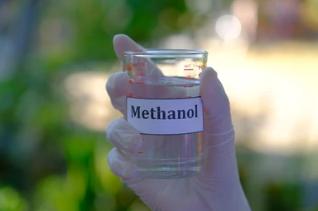Methanol, also known as industrial alcohol, is a highly toxic substance that can be absorbed through the respiratory tract, gastrointestinal tract, and skin and cause poisoning. Fake and low-quality alcohol contains high concentrations of methanol. Consumption of this alcohol can lead to double vision in mild cases and can be fatal in severe cases. A certain amount of methanol can be introduced or produced in the raw materials and brewing process of wine. For example, raw materials contain substances such as pectin and lignin, and methanol is produced during the process of hydrolysis and fermentation. Therefore, methanol, as a harmful component in wine, is one of the important hygiene indicators. The national health standard stipulates that those with cereals as raw material≤ 0.04 g/100 mL; those with dried potatoes and substitutes as raw material≤ 0.12 g/100 mL.

As Because the boiling points of methanol and ethanol are close to each other and difficult to separate, methanol is also colorless, tasteless, and highly volatile, and can be miscible with water and ethanol, so it cannot be identified by visual inspection and requires specific test methods for determination. As one of the leading providers of wine hygiene testing, Lifeasible offers professional solutions for methanol testing in wine. Our laboratory will perform tests strictly following international standards and provide reliable analytical results.
We offer standard methods and other methods for methanol testing in wine for our customers to choose from, as follows. Our solutions can meet the need for fast, simple, and accurate determination of methanol in wine in large quantities.
Different assay methods produce different precision results and require various environmental aspects for the experiment. Below is a comparison of some of the commonly used methods for methanol testing in wine. We will choose the best methanol testing method for each type of wine.
| Methanol Testing Methods in Wine | Features of Methods |
| High-Performance Liquid Chromatography (HPLC) Method | This method is fast, sensitive, and efficient for general methanol content experiments, but the use of this method requires sample preparation. |
| Gas Chromatography Method | This method is fast, simple, sensitive, accurate, and widely used. Our main gas chromatographic methods for methanol testing are the headspace GC method, capillary column GC method, etc. |
| Colorimetric Method | The usual reagent used in methanol detection is magenta-sulfite. This method is accurate but more complicated in practice. |
Our solutions for methanol testing in wine have excellent reproducibility and accuracy for different types of wines, and the results are fully compliant with the standards. Some of our methods are easy to use, fast and efficient, with high accuracy, making them a reliable choice. If you are interested in our solutions, please contact us for technical consultation and quotation.
Lifeasible has established a one-stop service platform for plants. In addition to obtaining customized solutions for plant genetic engineering, customers can also conduct follow-up analysis and research on plants through our analysis platform. The analytical services we provide include but are not limited to the following:
Get Latest Lifeasible News and Updates Directly to Your Inbox
Adaptive Evolutionary Mechanism of Plants
February 28, 2025
Unraveling Cotton Development: Insights from Multi-Omics Studies
February 27, 2025